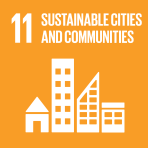- Home
- Sustainable Development Goals
- Sustainable Cities and Communities
 Sustainable Cities and Communities
Sustainable Cities and Communities
Country Profiles on Urban Development, Housing and Land Management
Albania
The "Country Profiles on Urban Development Housing and Land Management" is an important tool to analyse a country's policies and strategies on urban development housing and land management as well as its institutional and legal frameworks and progress made internationally. The Country Profile of Albania focuses on several key areas such as housing policy the housing sector in general land administration and governance urban and regional development and planning and financing affordable housing. The Country Profile provides recommendations in these areas for the government's consideration.
Land administration and governance
Land administration and governance encompasses a range of governance regulations processes and functions. It plays a crucial role in facilitating and protecting property rights/tenure and transfers regulating land use decisions and planning to promote development social equity conservation and economic growth managing property-related records and information and facilitating property valuation and taxation.
Executive summary
Albania a candidate for accession to the European Union (EU) has been implementing comprehensive reforms in the housing urban development and land management sectors. These reforms aim to meet EU requirements and internationally recognized standards and best practices with a view to improve the quality of life of its citizens.
Urban and regional development and planning
Albania has a relatively high urbanization rate with around 63 per cent of the population living in urban areas in 2021 and 62 per cent in 2020.
Financing affordable housing
Different stakeholders including government bodies private entities and international agencies play a role in the housing market of Albania. The private sector is the main player in housing construction transactions and finance and the dynamics of the housing market follow the macroeconomic conditions. However the mortgage market in Albania is still limited due to a lack of demand from the population and appropriate mortgage products. International financial institutions and countries are providing other forms of assistance and financial instruments.
Preface
The “Country Profiles on Urban Development Housing and Land Management” are designed to assist governments in improving the performance of their housing urban development and land management sectors while concurrently advocating for sustainable development. The Country Profiles analyse trends and policy developments offering a holistic assessment of the political economic and social framework of these sectors within a specific country. This initiative was initiated by the United Nations Economic Commission for Europe (UNECE) Committee on Housing and Land Management in the early 1990s in response to requests from UNECE member States.
Trees for a resilient and green Tirana
The UNECE Policy Brief Sustainable Urban and Peri-urban Forestry provides an overview of how policymakers may use urban trees as a nature-based solution with many benefits for cities.
Housing sector and housing policy
Housing is one of the basic social conditions that determine the quality of life and welfare of people communities and even entire nations. The location design and integration of homes into the social cultural economic and environmental fabric of communities have a significant impact on daily lives health safety and overall welfare. Given the long life of dwellings as physical structures these conditions affect both the present and future generations (Golubchikov and Badyina 2012). Therefore sustainable development cannot be achieved without ensuring access for all to adequate safe and affordable housing and basic services. This is recognised by target 11.1 of the United Nations Sustainable Development Goals (SDGs). Housing affordability is an important element of the right to adequate housing but is often a challenge especially for vulnerable groups of the population (United Nations publication 2021).
Acknowledgements
The United Nations Economic Commission for Europe (UNECE) would like to thank all who contributed to the development of the Country Profile on Urban Development Housing and Land Management of Albania. The publication would not have been possible without the support and contribution of the secretariat of the UNECE Forests Land and Housing Division international organizations governments and individuals.
Executive summary
Almaty is a vibrant metropolitan city. It serves as a significant hub for business economy culture and education both in Kazakhstan and Central Asia. It has set its sights on a vision of becoming one of the leading smart and sustainable cities in the UNECE region and beyond. Since gaining independence Almaty alongside the nation’s capital Astana has experienced tremendous growth paving the way for significant progress in realizing the Sustainable Development Goals of the 2030 Agenda for Sustainable Development.
Institutional and financial framework and Urban development priorities
The city of Almaty operates under state subordinance and is not considered part of the surrounding Almaty Oblast. Law No. 148 on Local Government and Self-Government in Kazakhstan of 23 January 2001 defines the powers of local government bodies at all levels.
